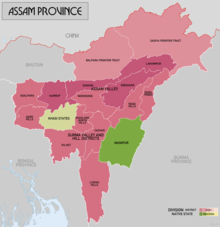The Hmar language belongs to the Mizo language branch of the Sino-Tibetan family of languages. The speakers of this language use Mizo language as their second language (L2).
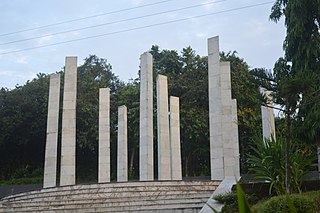
Cachardistrict is an administrative district in the state of Assam in India. After independence, the pre-existing undivided Cachar district was split into four districts: Dima Hasao, Hailakandi, Karimganj, and the current Cachar district. Silchar is Cachar district's center of government.

Dima Hasao district, is an administrative district in the state of Assam, India. As of 2011, it is the least populous district of Assam.

Silchar is a city and the headquarters of the Cachar district of the state of Assam, India. It is second largest city of North Eastern Region after Guwahati in terms of area, population and GDP. It is also administrative capital of Barak Valley division. It is located 343 kilometres south east of Guwahati. It was founded by Captain Thomas Fisher in 1832 when he shifted the headquarters of Cachar to Janiganj in Silchar. It earned the moniker "Island of Peace" from Indira Gandhi, the then Prime Minister of India. Silchar is the site of the world's first polo club and the first competitive polo match. In 1985, an Air India flight from Kolkata to Silchar became the world's first all-women crew flight. Silchar was a tea town and Cachar club was the meeting point for tea planters.
Haflong is a town and headquarters of Dima Hasao district in the state of Assam in India. It is the only hill station in Assam.

The Dimasa Kingdom was a late medieval/early modern kingdom in Assam, Northeast India ruled by Dimasa kings. The Dimasa kingdom and others that developed in the wake of the Kamarupa kingdom were examples of new states that emerged from indigenous communities in medieval Assam as a result of socio-political transformations in these communities. The British finally annexed the kingdom: the plains in 1832 and the hills in 1834. This kingdom gave its name to undivided Cachar district of colonial Assam. And after independence the undivided Cachar district was split into three districts in Assam: Dima Hasao district, Cachar district, Hailakandi district. The Ahom Buranjis called this kingdom Timisa.

The Dimasa people are an ethnolinguistic community presently inhabiting in Assam and Nagaland states in Northeastern India. They speak Dimasa, a Tibeto-Burman language. This community is fairly homogeneous and exclusive, with members required to draw from both parents' separate clans. Dimasa kingdom, one of many early states in Assam following the downfall of Kamarupa kingdom, was established by these people. The Dimasas were till recently agricultural, centering on shifting agriculture; but in recent times this has changed with profound changes in the community. Following political problems in the 18th century, the Dimasa ruler moved further south in the plains of Cachar and there took place a division among them–with the hills Dimasa maintaining their traditional living and political exclusiveness, the plains Dimasas have made no attempt to assert themselves.
The Dimasa language is a Tibeto-Burman language spoken by the Dimasa people of the Northeastern Indian states of Assam and Nagaland. The Dimasa language is known to Dimasas as "Grao-Dima" and it is similar to Boro, Kokborok and Garo languages.
Maibang is a town and a town area committee in Dima Hasao district in the Indian state of Assam. Maibang is also one of the three sub-divisions of Dima Hasao District. It was once the capital of the Dimasa Kachari Kingdom. There is a stone house of Dimasa king.

The Barak Valley is the southernmost region and administrative division of the Indian state of Assam. It is named after the Barak river. The Barak valley consists of three administrative districts of Assam namely - Cachar, Karimganj, and Hailakandi. The main and largest city is Silchar, which seats the headquarter of Cachar district and also serves as administrative divisional office of Barak valley division. The valley is bordered by Mizoram and Tripura to the south, Bangladesh and Meghalaya to the west and Manipur to the east respectively. Once North Cachar Hills was a part of Cachar district which became a subdivision in 1951 and eventually a separate district. On 1 July 1983, Karimganj district was curved out from the eponymous subdivision of Cachar district. In 1989 the subdivision of Hailakandi was upgraded into Hailakandi district.
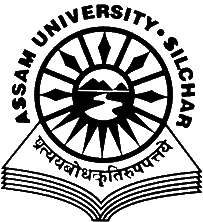
Assam University is a collegiate central public university located at Silchar, Assam, India. It was founded in the year 1994 by the provisions of an act enacted by the Parliament of India. Air Chief Marshal Arup Raha is the Chancellor, the Governor of Assam is the Chief Rector and the President of India is acting as the Visitor of the university. The university has sixteen schools which offer Humanities, Languages, Environmental Sciences, Information Sciences, Life Sciences, Physical Sciences, Social Sciences, Law, Technology and Management Studies. There are 42 departments under these sixteen schools. The five districts under the jurisdiction of Assam University have 73 undergraduate colleges as of 31 March 2020. Assam University is an institutional signatory to the Global Universities Network for Innovation (GUNI), Barcelona and United Nations Global Compact (UNGC) for its commitment to educational social responsibilities.
The Regions of Assam are non-administrative units in the Indian state of Assam with a common historical past. Not all these regions are mutually exclusive.
The Barman Kacharis are an indigenous community of Northeast India and are a subsection of the Dimasa people in Barak Valley but claim to a separate group in Brahmaputra Valley. They are mainly found in the districts of Lower Assam and in Barak Valley like Cachar, Hailakandi and Karimganj and some parts of Arunachal Pradesh. Barman Kachari is Dimasa convert group of North-East India. Since the 2002 Amendment act, many Barman Kacharis in Assam are referred to as 'Barman'. They are sparsely found in Brahmaputra valley.
Assam – 16th largest, 15th most populous and 26th most literate state of the 28 states of the democratic Republic of India. Assam is at 14th position in life expectancy and 8th in female-to-male sex ratio. Assam is the 21st most media exposed states in India. The Economy of Assam is largely agriculture based with 69% of the population engaged in it. Growth rate of Assam's income has not kept pace with that of India's during the Post-British Era; differences increased rapidly since the 1970s. While the Indian economy grew at 6 percent per annum over the period of 1981 to 2000, the same of Assam's grew only by 3.3 percent.
Retzawl is a village in Dima Hasao District of Assam State, India. Haflong, the district headquarters as well as its nearest town, is 17 kilometers away to the east, and Harangajao lies to the west.

The North Cachar Hills Autonomous Council (NCHAC), also known as known as the Dima Hasao Autonomous Council, is an autonomous district council in the state of Assam in India. It was constituted under the provisions of the Sixth Schedule of the Constitution of India to administer the Dima Hasao district and to develop the hill people in the area. Its headquarters is in Haflong, Dima Hasao district.
Barman Thar, where “thar” means language, is a highly endangered language. It is a Tibeto-Burman language that belongs to the Boro–Garo sub-group. The population of the Barman Kachari community is 24,237, according to a 2017 census. However, only a small part of this population speaks the language.

The Dimasa Kachari plains tribe of Cachar are known as Barman, forming one of the indigenous tribes of undivided Cachar. The Dimasas, inhabiting in the Cachar district are officially recognized as one of the Scheduled Tribes under the plains category in Assam in the name called “Barmans in Cachar”.
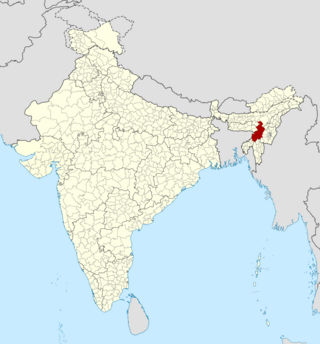
The Barak state movement includes political activities organised by various individuals, organizations and political parties, for creation of a separate state of Barak, within the republic of India, with Silchar as the capital. The proposed state corresponds to the 5 southern districts of the state of Assam namely: Cachar, Hailakandi, Karimganj, Dima Hasao, Hojai's and Jiribam of Manipur respectively. The total area and population of proposed state is 13,379 km² and 4.5 million as per 2011 Census. The area is covered by thick tropical forests and is surplus in natural resources like tea, oil, natural gas and jute. There are around 125 tea gardens across the Valley. The Minister of Petroleum and Natural Gas of India Mr. Hardeep Singh Puri on a visit have stated that the region is rich in natural gas and have further said that, "If those huge reserve is properly used, then it will definitely boost local industry & employment.
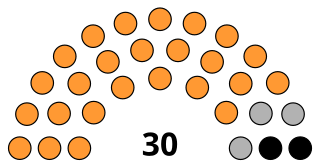
The Dima Hasao Autonomous Council election were held on 8 January 2024. The Dima Hasao Autonomous Council, earlier called North Cachar Hills District Council is an Autonomous district in the Indian state of Assam.
